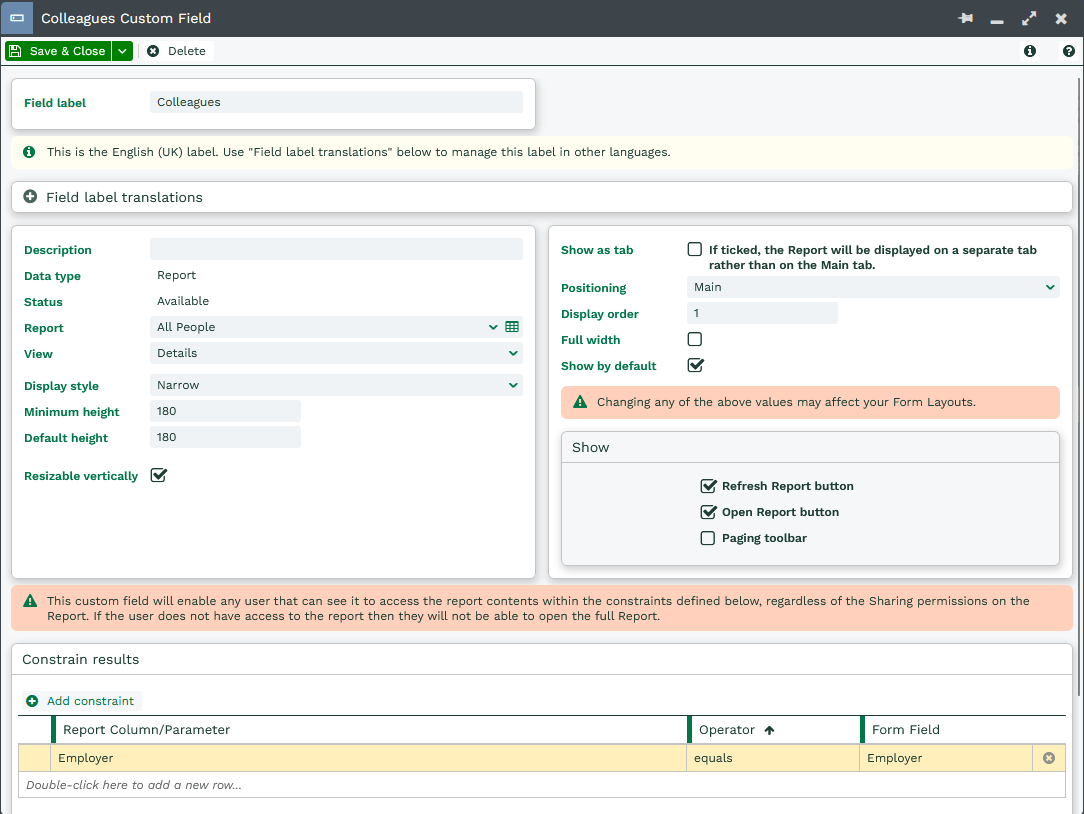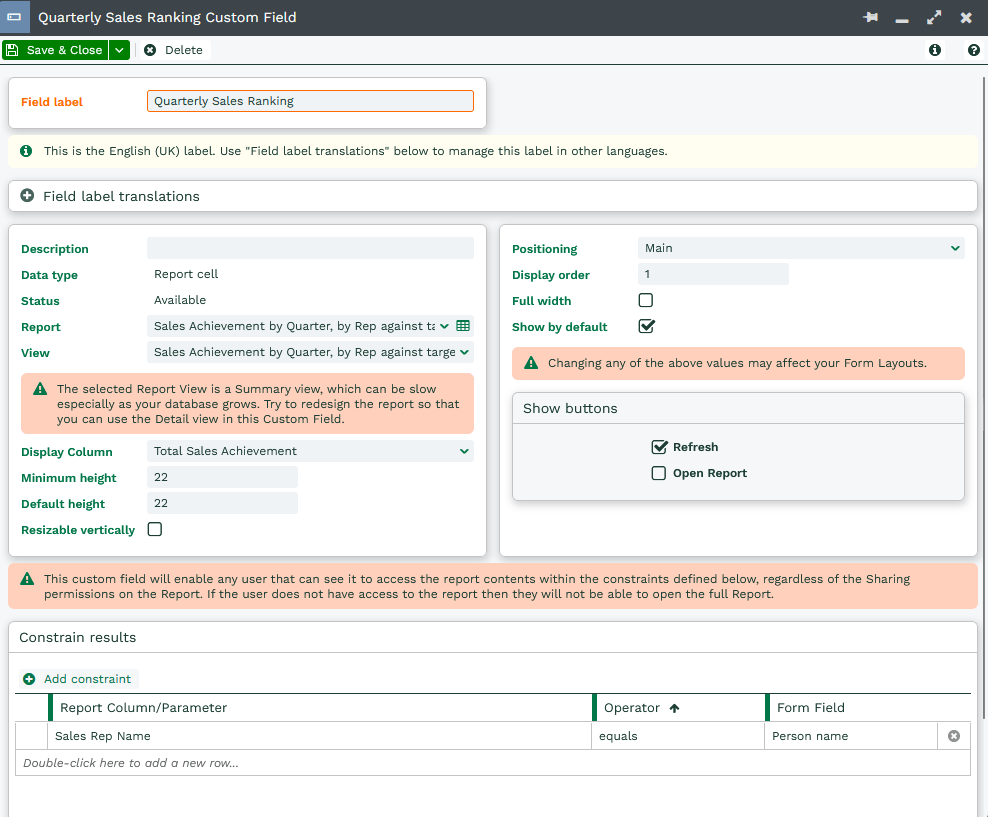Displaying reports within Record Views
How to use Custom Fields to display the results from reports on a record directly.
Reporting into Custom Fields
Workbooks allows you to incorporate reports into your custom fields, so that you can dynamically display data in a much broader and more efficient way.
Each time you open or save a record, the data will automatically refresh so that it is displaying the most up-to-date information from the report at the time. You are also able to select to display a Refresh button and/or an Open Report button within the Custom Field configuration View.
There are two ways that you can incorporate reports into your records; firstly as a report caption, and also by returning a specific singular value.
To incorporate a report as a Frame into the record view, select the custom field type Report:

In this example, we want to return a report that will show this person as a colleague, so we are using the report of All People
To filter down to the people that are linked to this person via their employer, we need to map the Form Field Employer to the Report Column Employer’s ID. Doing this will ensure that the results returned will all work for the same Employer as the person on the record.
The size of the Frame can be altered by changing the Minimum Height and Default Height values.
The settings above will now configure a Frame, as shown below, to be embedded within the Record View. It can be navigated and used as if it were a normal Report.
You can also create a custom field based on a Report cell, which will return a single result specific to the Record in question, rather than returning a list of results.
After adding a Report cell custom field, you are presented with a similar view to that which is seen with Report Custom Fields

In this example we will use the Report cell to show the rank of our chosen person, amongst the rest of the Sales force. First we need to select the relevant Report (a Sales Achievement by Quarter report in this case) and then narrow it down to the column value that we wish to retrieve.
In order to retrieve the data relevant to the Record we want, we need to add constraints to tell Workbooks which row to look at. For example, if we want to find the row relevant to the Person whose Record we have opened, we will map the Sales Rep field to the Person Name column.